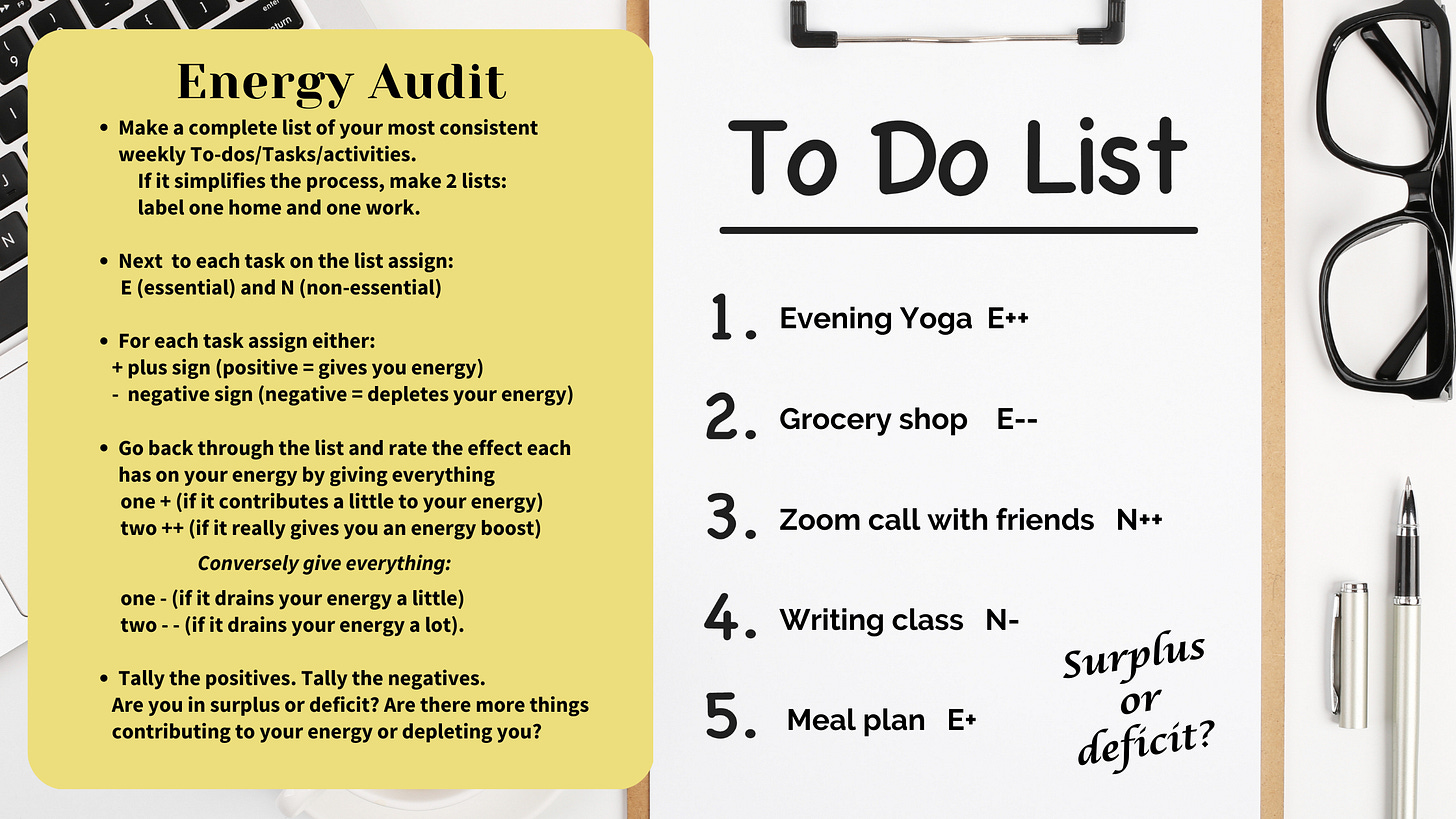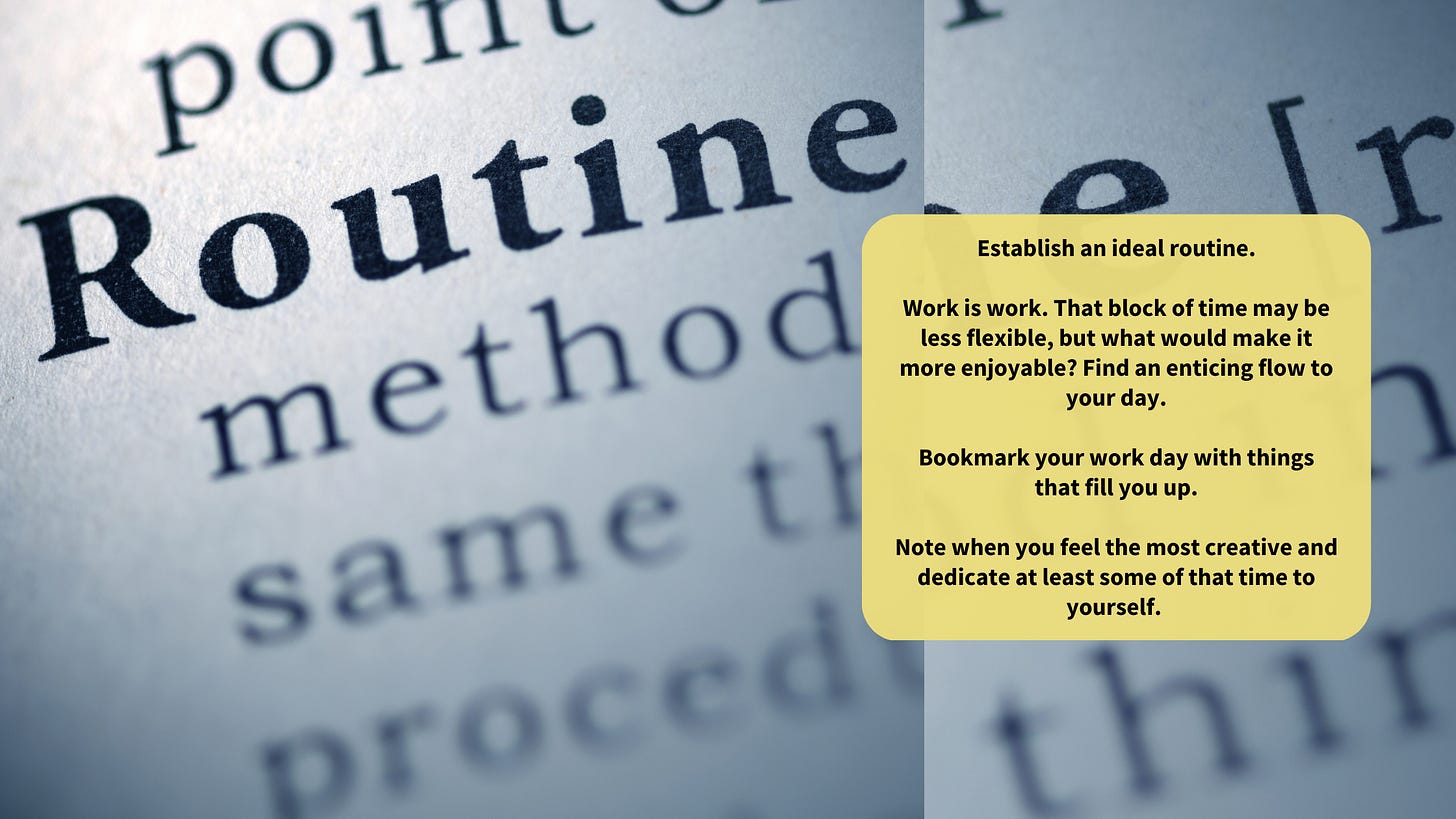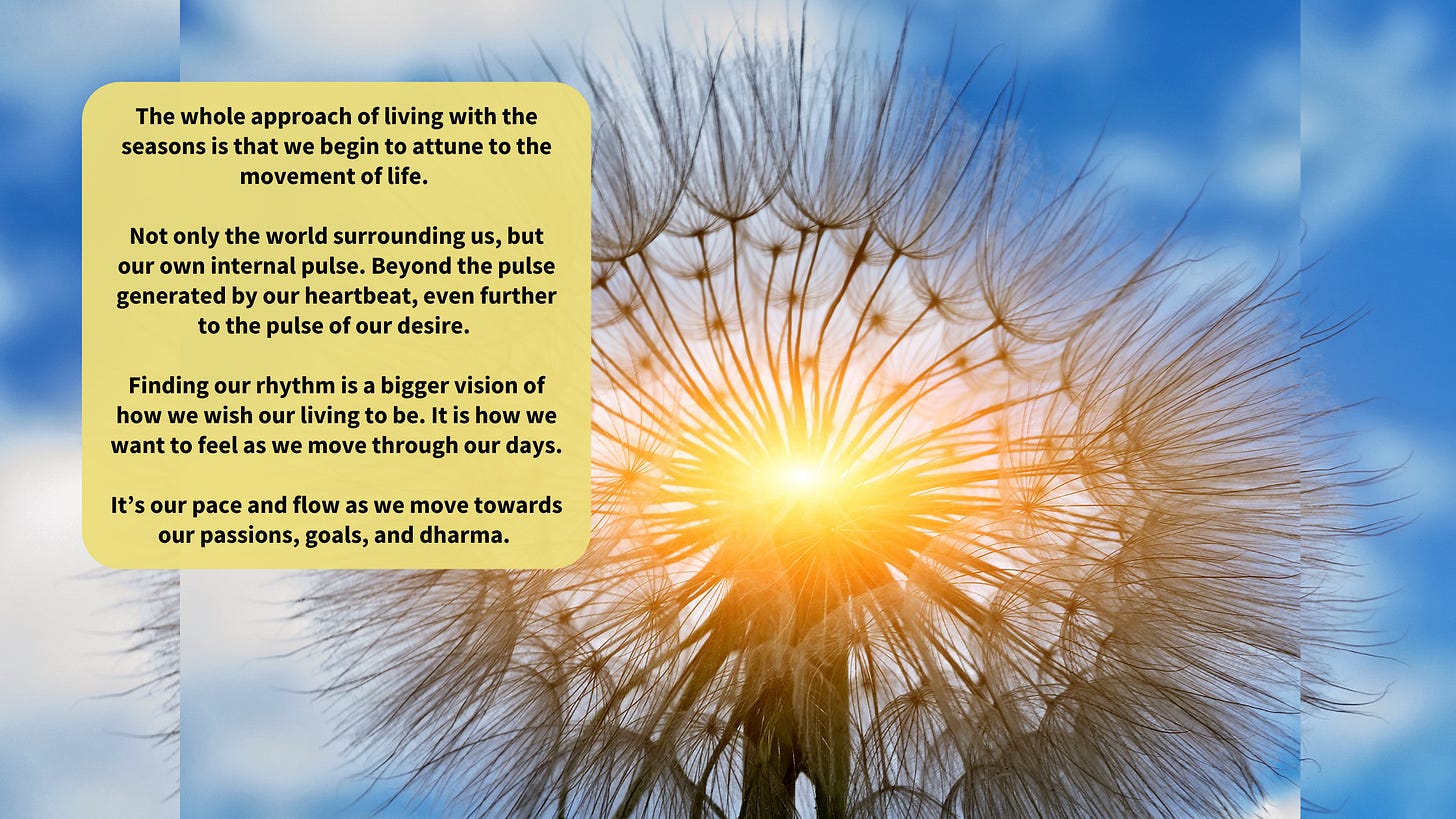Spring schedules have already started filling up. With longer hours of daylight, we lose track of time and push well beyond our boundaries. We may need to find a way to honor our personal priorities while still getting all the other demands met. From social jet lag to work weeks that push well beyond 40 hours, schedules change and we have to adjust. Among many addictions that are endemic, this country struggles with productivity addiction. Capitalism and consumerism driving people to do and go. To work and buy. It’s a vicious cycle leaving us in the middle of a juggling act. It’s no wonder we are exhausted physically, spiritually and financially.
What no longer sustains you drains you. We’ve all had times in our lives where we feel low energy. Our mind is racing, but our body needs rest. We have a list of things we want to do, but don’t have the stamina to finish it all. Our creative ideas need some fire and focus. Our motivation and drive need the inherent power of passion. To reestablish our balance and get ready for a new season it can be valuable to do an energy audit. Our to-do lists are full of both essential tasks for mere survival and a lot of unnecessary busy work that never yields much gain.
Energy Audit
The concept of an energy audit came from one of my favorite books on practical Ayurveda, Sarah Kucera’s, The Ayurvedic Self-Care Handbook: Holistic Healing Rituals for Every Day and Season. It’s one I refer to and recommend repeatedly. I have changed a few things, but the result is still the same. It reveals where your life force, prana, is getting depleted. Take a few minutes to look at how you spend your energy. See where you are out of sync and resolve to make changes to things that are diminishing your vitality. It’s important to get a clear picture of what (or who) is draining you, so you can let it go or find a solution to at least diminish its effect.
Make a complete list of your most consistent weekly To-dos/Tasks/activities.
If it simplifies the process, make 2 lists: label one home and one work.
Next to each task on the list assign: E (essential) and N (non-essential)
For each task assign either: + plus sign (positive = gives you energy)
- negative sign (negative = depletes your energy)
Go back through the list and rate the effect each has on your energy by
giving everything
one + (if it contributes a little to your energy)
two ++ (if it really gives you an energy boost)
Conversely give everything: one - (if it drains your energy a little)
two - - (if it drains your energy a lot).
Tally the positives. Tally the negatives. Are you in surplus or deficit? Are there more things contributing to your energy or depleting you?
For more insight, spend a few moments journaling your answers to these questions:
In your assessment, where are your weakest links?
Where are you spending most of your energy? Work, home, family…
How are you being refueled?
What is essential to your well being and your sustainability?
Other factors to consider:
When do you feel your energy dip? Is it after a particular time of day?
Is it after a certain activity or interaction with someone?
Find solutions that support your vital energy.
Change: Evaluate your list of nonessential tasks could they be delegated or eliminated?
What can you eliminate?
Eliminate- Try not doing something for a couple weeks and see if it really mattered in the grand scheme of things. If it’s not a priority or doesn’t give you back something, then maybe it’s just not worth your time and attention.
What can you delegate?
Delegate- use a service to complete the undesirable tasks like laundry, grocery shopping, cleaning. Is there an app for that? Accounting, editing, scheduling emails, social posts. Outsourcing the tasks that drag you down are sometimes a worthy investment. The job gets done and you can use your creative energy for something more fulfilling.
Adjust: Evaluate your list of negative (energy depleting) tasks, is there something that you could change about them to make them less draining or more enjoyable?
What are other things that make something more enjoyable for you?
Adjust- If working from home has you feeling isolated, head to a coffee shop to write emails. Meetings at work leave you feeling overwhelmed? Give yourself a 15 minute break to take a walk and clear your head. If you are procrastinating on something you hate doing, do it first. Get it out of the way so thinking about it won’t continually distract and drain you.
Establish an ideal routine.
Work is work. That block of time may be less flexible, but what would make it more enjoyable? Find an enticing flow to your day.
WFH? Perhaps chores like dishes or meal prep can be filtered in throughout the day as you give yourself fifteen minute breaks from your hardcore work.
When is the best time for your movement practice? Maybe at the beginning of the day to boost your energy. Or at the end to decompress? Perhaps movement breaks throughout the day is just what you need to refocus.
Bookend your work day with things that fill you up.
Take a look at your free time. All of it. Are your free time activities contributing to your well being?
Note when you feel the most creative and dedicate at least some of that time to yourself.
Finding your rhythm is about more than surviving a busy schedule. It’s about more than where you will travel and what you need to accomplish. This is about the fullness you want to feel in these experiences. The whole approach of living with the seasons is that we begin to attune to the movement of life. Not only the world surrounding us, but our own internal pulse. Beyond the pulse generated by our heartbeat, even further to the pulse of our desire. Finding our rhythm is a bigger vision of how we wish our living to be. It is how we want to feel as we move through our days. It’s our pace and flow as we move towards our passions, goals, and dharma.








